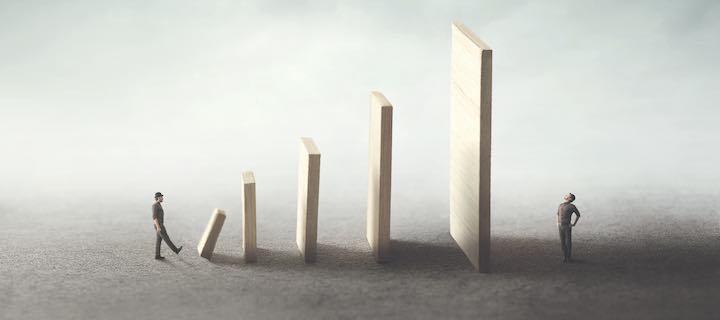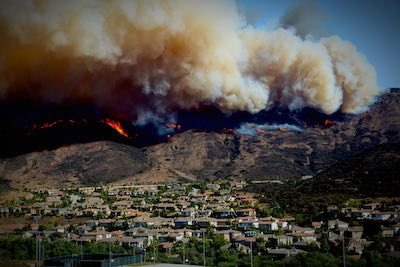
On March 11, 2011, the strongest earthquake ever recorded in Japan struck just off the coast of the island nation. It created a massive Tsunami and triggered several nuclear accidents, including meltdowns at three reactors in the Fukushima Daiichi Nuclear Power Plant complex.
The chain of disasters killed more than 15,800 people, partially or totally destroyed countless buildings, and displaced hundreds of thousands of people. The government estimated the costs of rebuilding at more than $300 billion, or about 6 percent of the nation’s total economic output.
The effect on Japan and its economy were enormous, but in a world connected by communications technology, international trade, and global supply chains, the impact didn’t stop there. In the weeks that followed, U.S. companies that relied in part on Japanese consumers took a hit, and supply chains that depended on parts from Japan for everything from computers to automobiles were disrupted to varying degrees.
“With globalization, we’re all affected,” said Tim Frazier, Ph.D., faculty director of Georgetown University’s graduate programs in Emergency & Disaster Management. “You don’t have to be living in the country that experienced the disaster to be impacted.”
Impact on Business
On October 10, Hurricane Michael, one of the strongest storms ever to hit the continental United States, struck the Florida panhandle with peak winds of 155 miles per hour. While it is too early to assess Michael’s long-term impact on the Florida and U.S. economies, the experience of Hurricane Katrina suggested that many businesses will not recover, Frazier said. Katrina caused $108 billion in damages—and, according to one study, $250 billion when the economic impact was included.
“Most businesses, particularly small businesses, are really vulnerable because they don’t have the capital invested to cover the cost of business interruption,” Frazier said. “It’s often difficult for local businesses to withstand the shock and come back.”
Businesses that are part of a chain may be better able to absorb the loss from a natural disaster because the company is getting revenue from other outlets, Frazier said. However, in the hardest hit areas, a company may decide that it’s not worth the expense to rebuild in a disaster zone.
Farukh Azad—manager of digital transformation at the telecommunications company Ooredoo in Doha, Qatar, and current student in the program—said the program helps students in “handling disastrous situations, helping people in need, and rebuilding telecommunications infrastructure and communication networks while managing resources effectively.”
Bigger Populations, Bigger Risks
Scientists say that a warming Gulf of Mexico made Hurricane Michael more powerful than it otherwise would have been. Water temperatures were three to five degrees Fahrenheit above normal, resulting in more evaporation and moisture in the atmosphere.
At the same time that hurricanes are getting more powerful and coastal flooding more intense, an increasing number of people worldwide are moving to the coasts, where there are larger, denser populations and more economic opportunity. And more economic opportunity ultimately means more risk when the next disaster occurs.
